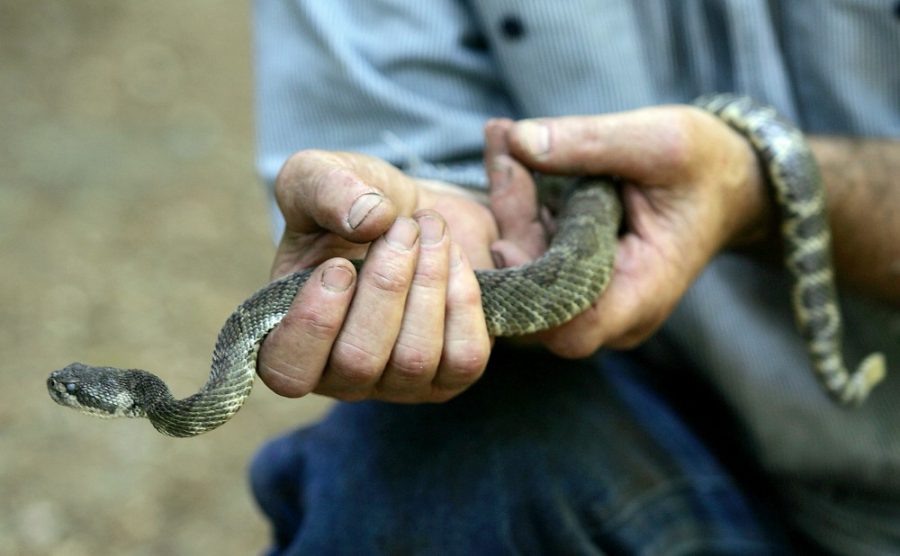As the temperatures keep rising, so do the number of reported snakebites in Arizona.
Seventeen rattlesnake attacks have occurred since the beginning of the year, and as the snake season continues, experts are spreading the word about the dangers of rattlesnakes to help keep people safe.
Snakes are most dangerous during the early months of spring, when they come out of hibernation for food, according to Mike Berry, a wildlife expert from the Arizona Game and Fish Department.
“In the summertime, you’ll find the snakes more passive aggressive and concerned with finding some shade,” Berry said.
Usually exploring no more than four to five miles from their winter den, Berry said the snakes can be stubborn and may refuse to leave a shady spot, even when threatened by a human.
“Cool concrete on someone’s front porch is what they crave most in the hot days of August,” Berry said. The fire department is only permitted to remove a snake a quarter of a mile from where it is found, and the snake is likely to return to that same spot until it goes back into hibernation in October.
“We still see activity year round,” said Gordon Schuett, a rattlesnake expert who specializes in tracking the 13 species of rattlesnakes that inhabit Arizona. “It’s not unusual for male snakes to make small visits to female snakes when trying to find a mate for spring.”
The Arizona Poison and Drug Information Center has a range of 150 to 200 reported snakebites each year, with less than 1 percent of those bites resulting in death.
“The snakebite side effects can range from nothing to death,” said Keith Boesen, the director of the Arizona Poison and Drug Information Center.
The digestive enzymes in rattlesnake venom typically attack three areas of the human body: human tissue that results in blood blisters and severe swelling, blood thinning that causes greater bruising and the respiratory system, which can affect one’s ability to breathe, Boesen said.
“Venom is very complex,” he said, “it consists of more 100 different proteins.”
It can take about 12 hours from the time of a bite for the correct symptoms to take effect, he said — then the right amount of anti-venom must be applied. Typically, 12 vials of anti-venom are administered to a rattlesnake bite, with each vial costing about $2,000 worth of medicine.
Despite the big fees, Boesen is still adamant that rattlesnake bites are treated best in a hospital. He explained that any kind of self-treatment, like sucking the venom out, can do more harm than good.
The Arizona Poison and Drug Information Center aims to help the UA and surrounding communities with venomous bites by identifying the symptoms afflicted by the venom, as well as helping with long-term recovery for patients in need of physical therapy.
“Like a big bowl of soup, every snake’s venom can have a different recipe,” said Boesen, “and we work to try and uncover that recipe.”









